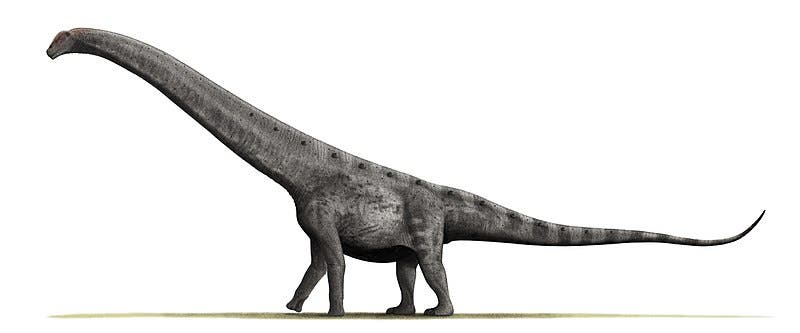The remains of one dinosaur unearthed in Argentina, while yet unidentified, could have belonged to an immense creature.

Paleontologists have discovered the 98 million-year-old titanosaur in northwest Patagonia (the tip of the South American continent) in the Neuquén Province. The trove included 24 vertebrae from the tail, alongside elements of its pelvic and pectoral girdle, found in sedimentary deposits in the local Candeleros Formation. Titanosaurs, as their name suggests, were immense animals; believed to have been the largest animals to have ever walked on land.
Argentinian titan
“It is a huge dinosaur, but we expect to find much more of the skeleton in future field trips, so we’ll have the possibility to address with confidence how really big it was,” Alejandro Otero, a paleontologist with Argentina’s Museo de La Plata, told CNN.
Titanosaurs were part of the sauropod family, a group of dinosaurs known for their impressive size, long necks, and long tails. These four-legged animals were herbivores and were only contested by the most deadly top predators during their heyday — between the Late Jurassic and into the Cretaceous. So far, titanosaurs have been discovered on all continents except Antarctica.
The authors of the paper believe that the fossils could have belonged to “one of the largest sauropods ever found”, larger even than a Patagotitan, a species of dinosaur that grew up to 37.2 meters (122 feet) in length. Patagotitans have so far been found only in Patagonia (hence, the name) and they were really, really plump, growing to around 77 tons.
Without access to one of the newly-discovered dinosaur’s humerus or femur for a proper, in-depth analysis, it’s impossible to say for sure how much it weighed. Judging by the relative size of the bones they did find, however, it could very well be “considered one of the largest titanosaurs,” the team explains. It likely grew heavier than the Patagotitans or Argentionaurus (another local dino species that could grow up to 110 tons).
The authors say that the new discovery points to the co-existence of large and medium-sized titanosaurs alongside small-sized rebbachisaurids, a relatively obscure family of sauropods, in the area at the beginning of the Late Cretaceous period. Still, for now, they don’t believe we’re looking at a new species of dinosaur, but they haven’t been able to identify it either.
“These size differences could indeed explain the existence of such sauropod diversity in the Neuquén Basin during the Late Cretaceous in terms of niche partitioning,” they wrote.
The paper “Report of a giant titanosaur sauropod from the Upper Cretaceous of Neuquén Province, Argentina” has been published in the journal Cretaceous Research.









